4.
"We planned,
it worked"
|
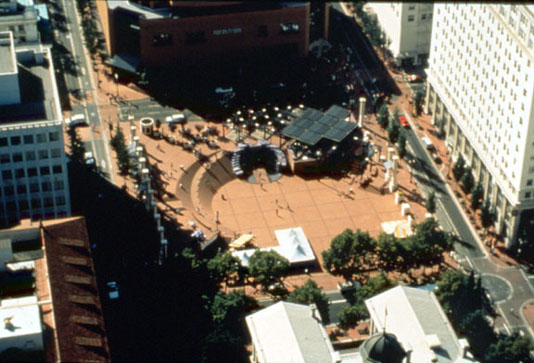
Aerial photo
of Pioneer Courthouse Square, on the 100% location in Portland - site
of a former two-level parking structure slated in the 70s to become a
ten-story garage. |
| I love that
Portland implemented its Downtown Plan. It is such a Portland story
that all these varied types came together in the early '70s to create a
simple, elegant plan, and then, over the last three decades, it has really
been carried out. "We planned, it worked" was the tag line from
the 25th anniversary celebration of the downtown plan. |
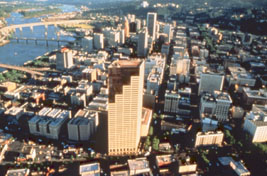
Looking down
the transit spine from the north. Densities are massed along the spine
to give views to the river and hills, and put the most workers next to
transit. |
The plan grew in
part out of the ire in the late 1960s of some ordinary moms who were disgusted
with Portland's air pollution. It gained traction with savvy business interests
who saw the value of a strong downtown. The simplicity of the plan meant
you could draw it on a napkin. It called for building a transit spine running
north/south through downtown, developing an east/west retail core, replacing
the Harbor Drive freeway with a waterfront park, and bringing housing to
downtown for a 24-hour city. |
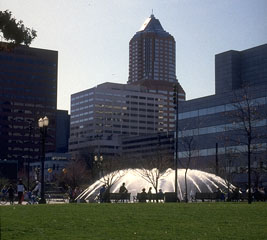
Salmon Springs Fountain
in Tom McCall Waterfront Park -- on the site of the old Harbor Drive Freeway. |
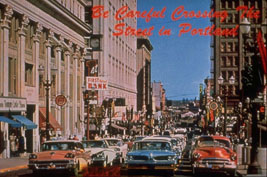
|
A key part of the plan to clean
up Portland's air was to get people to come downtown by transit. On the
left is Morrison Street in downtown in the late 1950s, and the same street
in 1986 when the MAX light rail opened. |
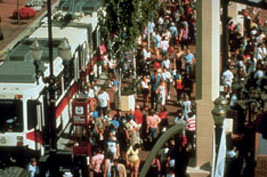 |
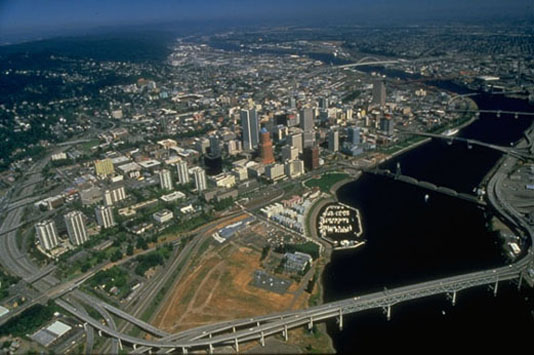 |
Downtown housing is key,
as are close-in employment opportunities. The large open area near the
bottom of the photo at left is the start of South Waterfront development.
Below is the tram, built in 2006, that connects the South Waterfront district
to Oregon Health Services University, the City's largest employer.

|
| |
|
|
 |
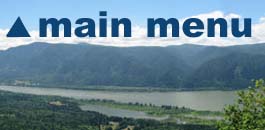 |
 |








